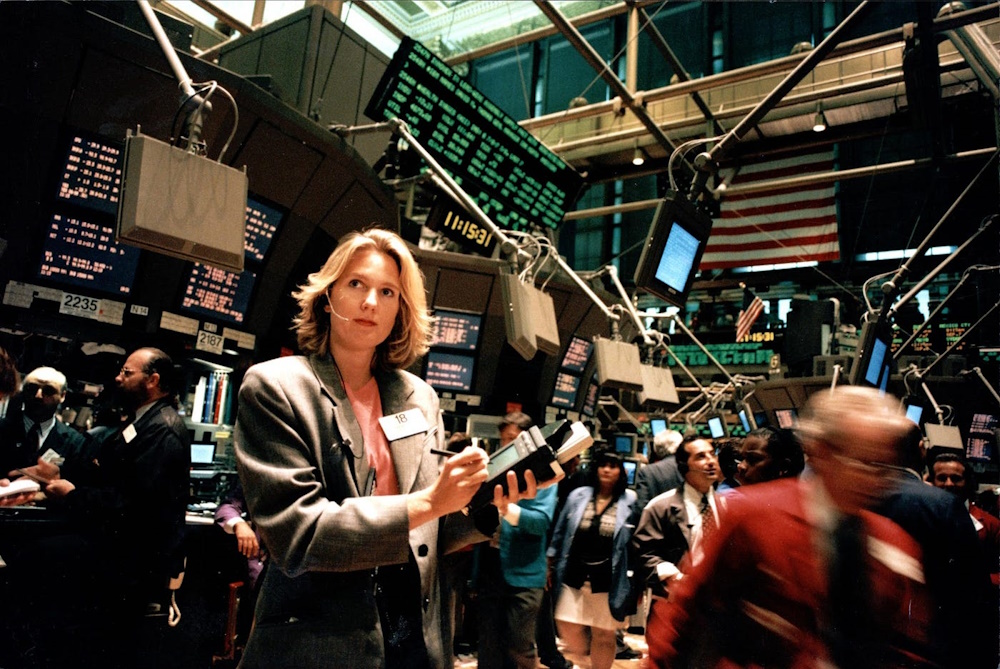
Dow futures fluctuate slightly above and below the neutral point following U.S. President Donald Trump’s recent move in his assertive tariff strategy. Trump has dispatched letters to over a dozen countries detailing the increased tariffs they are now subject to, while delaying the deadline for the implementation of these elevated levies. In other developments, China cautions the Trump administration regarding the potential repercussions of easing trade tensions. Dow Jones Futures declined by 66 points, representing a decrease of 0.2%, whereas S&P 500 Futures remained largely stable, and Nasdaq 100 Futures increased by 31 points, equivalent to a rise of 0.1%.
The primary indices on Wall Street concluded the day in the red on Monday, as analysts indicated that certain traders appeared to be taking profits following Trump’s announcement of letters sent to various countries outlining their revised U.S. import tariff rates, thereby postponing an imminent tariff deadline.Nonetheless, a conviction among certain market participants persists that Trump may exhibit flexibility regarding tariff negotiations. Additionally, indicators of robust growth alongside moderating inflation have bolstered sentiment and alleviated concerns regarding the implications of the announcement, analysts at Vital Knowledge noted. “While stocks faced some pressure on Monday and concerns regarding tariffs increased, bulls continue to dominate the narrative,” they added.
On Monday, tariffs re-emerged as a focal point after Trump dispatched letters to 14 nations, cautioning them about a forthcoming rise in duties. While numerous rates did not reach the levels Trump first announced during his “Liberation Day” event in early April, they nonetheless exceeded the current baseline levy of 10%.Trump established a new tariff deadline of August 1 for various countries, including significant suppliers Japan and South Korea, and cautioned these nations against implementing retaliatory actions. The announcement prolongs a prior postponement of the increased duties originally scheduled to lapse on July 9, thereby intensifying the urgency for these nations to swiftly negotiate an agreement with the White House. However, when queried about the immovability of the August 1 deadline, Trump indicated that it was “firm, but not 100% firm.” The president stated, “If they call up and they say we’d like to do something a different way, we’re going to be open to that.”
It is important to note that the increased tariffs will not be aggregated with the previously declared sector-specific tariffs, including those imposed on automobiles, steel, and aluminum. Importantly, letters were not dispatched to India and the European Union, a development that analysts and media reports have interpreted as a signal that potential trade agreements could be on the horizon. Japan, alongside South Korea, confronts a 25% tax on products exported to the U.S. The nation has indicated its willingness to engage in negotiations with Washington, as Prime Minister Shigeru Ishiba committed to pursuing a favorable agreement. South Korean Trade Minister Yeo Han-koo met with U.S. Commerce Secretary Howard Lutnick on Monday to discuss potential exemptions or reductions in significant auto and steel tariffs, according to Seoul’s trade ministry.
In another development, China cautioned Trump against rekindling a protracted dispute regarding tariffs, highlighting the precarious nature of a recently established trade truce between the two largest economies globally. In June, the U.S. and China reaffirmed a “framework” trade deal after extensive negotiations in London, yet numerous details remain ambiguous, intensifying skepticism regarding the durability of the detente. China has until August 12 to negotiate with Trump to avert the reinstatement of elevated tariff rates established during the reciprocal trade conflict in April and May. Should they be reinstated, U.S. tariffs on China would exceed 100%. A commentary in the People’s Daily, the official newspaper of the ruling Communist Party in China, emphasized the necessity of further “dialogue and cooperation,” asserting that these represent “the only correct path.” However, the article, which was authored using the terminology the publication employs to articulate foreign policy perspectives, maintained its assertion that Trump’s tariffs constitute “bullying,” and condemned smaller economies that were attempting to negotiate agreements with the U.S. A retaliation was also threatened against any country that enters into supply chain agreements with the U.S. that exclude China.
Crude prices experienced a decline as traders assessed the uncertainty surrounding the potential ramifications of Trump’s tariff increases, coupled with ongoing apprehensions regarding the rise in OPEC+ production levels. Brent futures experienced a slight decline of 0.1%, settling at $69.54 per barrel, while U.S. West Texas Intermediate crude futures decreased by 0.2%, reaching $67.76 per barrel. Trump’s tariffs have introduced a degree of uncertainty in the market, raising concerns about their potential adverse impact on the global economy and, by extension, on oil demand.
In a recent development, the Organization of the Petroleum Exporting Countries and its allies, collectively referred to as OPEC+, declared on Saturday an increase in oil production by 548,000 barrels per day (bpd) for the month of August. The increase surpassed the 411,000 bpd adjustments already enacted for May, June, and July.
Amazon is set to commence its Prime Day on Tuesday, with projections indicating an increase in digital shopping activity throughout the extended four-day sales event. Online spending is projected to reach $23.8 billion among U.S. retailers during Prime Day. Sales are projected to increase by 28.4% relative to the previous year’s two-day event.
Executives indicated that the extension was a response to feedback from Prime members, who expressed a need for additional time to explore deals. In July 2024, Amazon’s prior Prime Day saw American consumers allocate $14.2 billion, reflecting an 11% increase compared to the previous year, as reported by Adobe Analytics and referenced by Reuters. However, Prime Day has encountered increasing competition from analogous sales initiatives launched by competitors such as Walmart, Target, and more recently, ByteDance’s TikTok Shop. Intense competition has emerged to attract younger consumers eager to purchase back-to-school and back-to-college merchandise at lower prices. Amazon’s Prime service has extended a discounted subscription rate and additional benefits to individuals aged 18 to 24.
